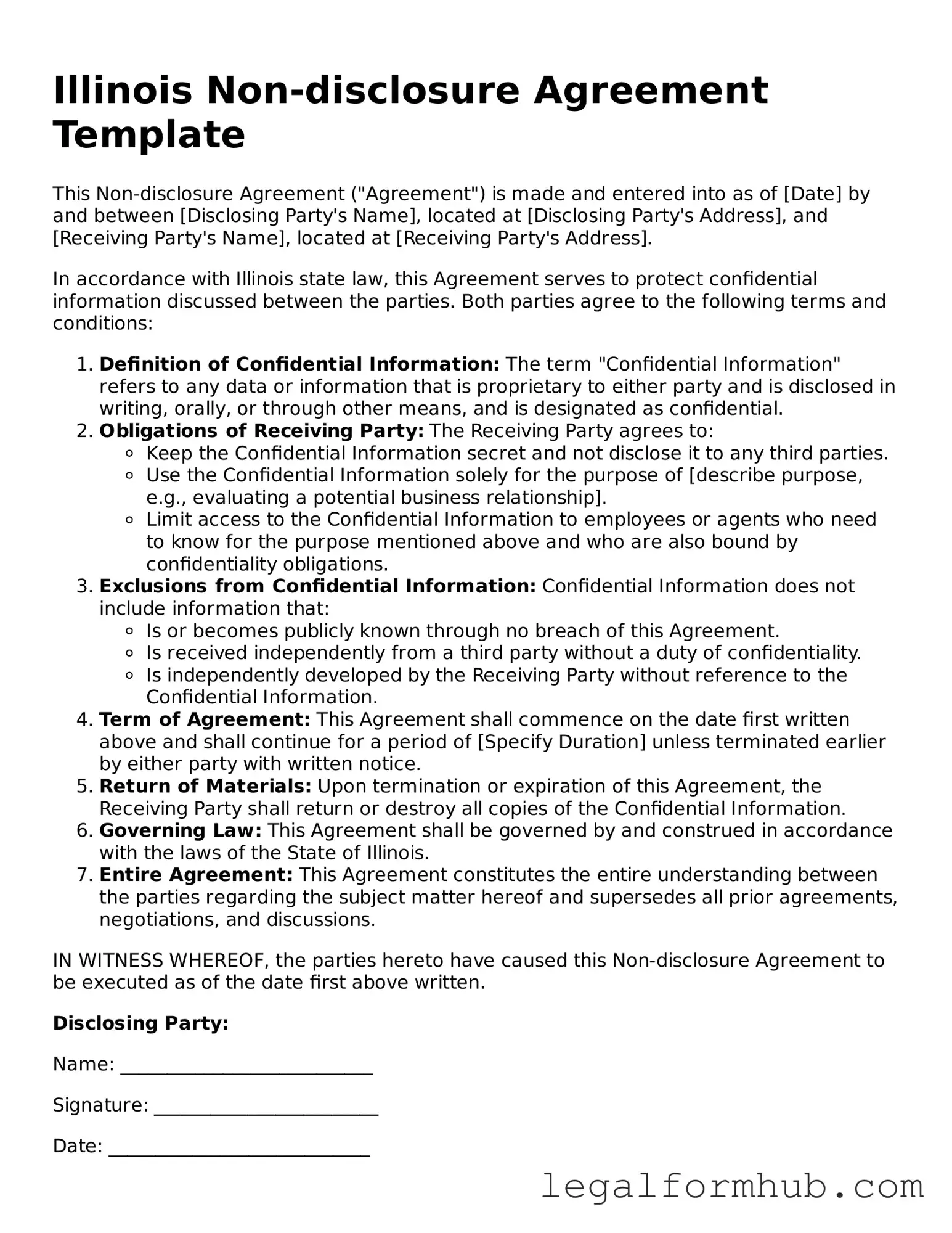A Non-Disclosure Agreement (NDA) is often compared to a Confidentiality Agreement. Both documents serve the primary purpose of protecting sensitive information from being disclosed to unauthorized parties. While NDAs are commonly used in business contexts, confidentiality agreements can also apply to personal matters. The terms and conditions outlined in both documents typically specify what information is considered confidential and the obligations of the parties involved regarding that information.
Another document similar to an NDA is a Non-Circumvention Agreement. This type of agreement is designed to prevent one party from bypassing another to engage directly with a third party. In business dealings, it ensures that all parties are protected from losing potential profits or opportunities. While NDAs focus on confidentiality, non-circumvention agreements emphasize the relationship between the parties and the importance of not undermining each other’s interests.
A Mutual Non-Disclosure Agreement is another closely related document. This agreement is used when both parties intend to share confidential information with each other. Unlike a standard NDA, which typically protects only one party's information, a mutual NDA establishes obligations for both parties, ensuring that each respects the confidentiality of the other's sensitive data.
A Proprietary Information Agreement also shares similarities with NDAs. This document specifically addresses the protection of proprietary information, which can include trade secrets, business strategies, and other intellectual property. The focus here is on safeguarding the unique aspects of a business that provide it with a competitive edge, similar to how an NDA protects general confidential information.
If you're looking to finalize your vehicle transaction, consider utilizing a reliable form like the "streamlined Motor Vehicle Bill of Sale template." You can access it here.
In some cases, a Non-Disclosure and Non-Compete Agreement may be utilized. This combined document not only restricts the sharing of confidential information but also limits one party from entering into competition with the other for a specified period. This dual protection can be particularly important in industries where sensitive information and competitive practices are closely intertwined.
A Service Agreement can also bear resemblance to an NDA, particularly when it includes confidentiality clauses. Such agreements outline the terms of service between parties, often including provisions that require one or both parties to keep certain information confidential. The emphasis here is on the relationship and services provided, while still maintaining a focus on protecting sensitive information.
Employment Agreements often contain confidentiality provisions akin to those found in NDAs. When an employee is hired, they may be required to sign an agreement that includes terms about keeping company information private. This protects the employer’s interests while also clearly defining the expectations of the employee regarding confidentiality.
A Licensing Agreement may also include confidentiality clauses similar to those in an NDA. This type of agreement allows one party to use another’s intellectual property under specific conditions. Often, the licensing party will require the licensee to keep certain information confidential to protect the integrity of the intellectual property involved.
A Collaboration Agreement can resemble an NDA when it includes terms about the sharing of confidential information between parties working together. This document outlines the roles and responsibilities of each party, while also establishing how sensitive information will be handled during the collaboration. This ensures that all parties are on the same page regarding confidentiality.
Finally, a Partnership Agreement can include confidentiality clauses similar to those found in NDAs. When two or more parties form a partnership, they often share sensitive information with each other. The partnership agreement can specify how this information should be handled, ensuring that all partners understand their obligations to maintain confidentiality throughout the partnership.
